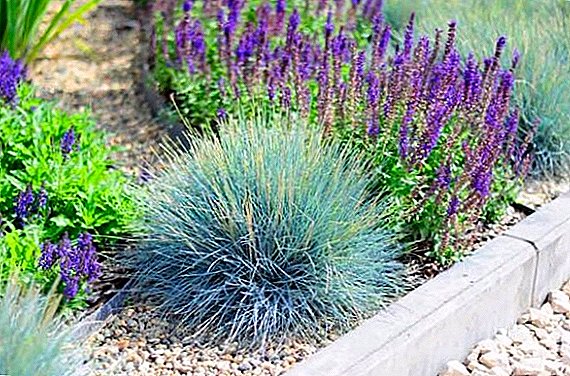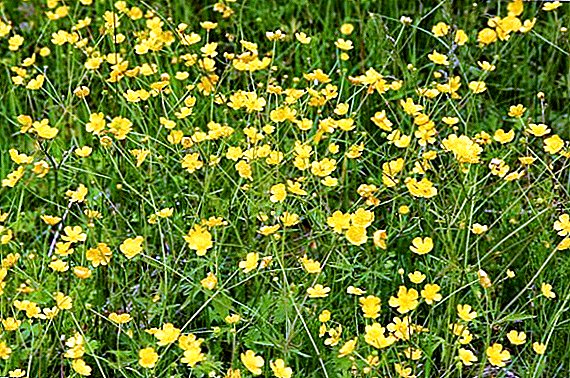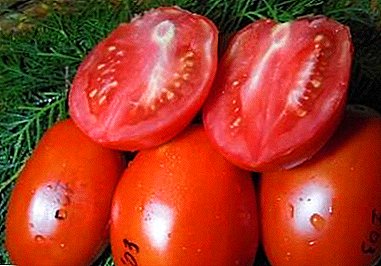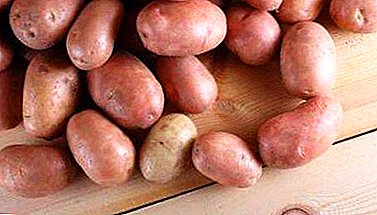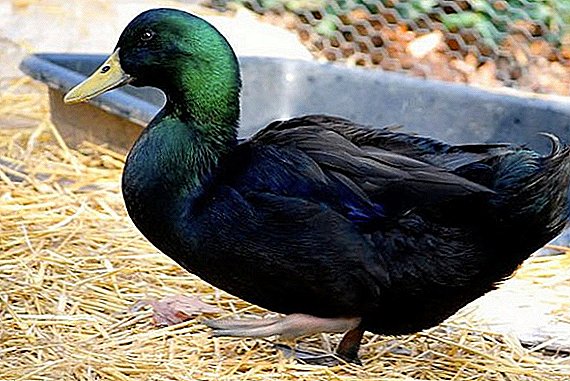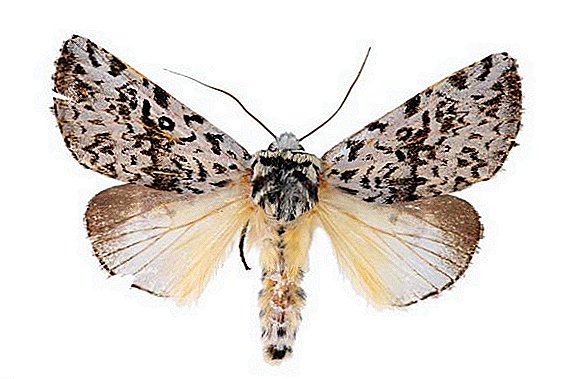 Scoops are a very large family of Lepidoptera. They live everywhere. In appearance, scoops look like butterflies of the home moth, only they do harm not in houses, but in gardens and kitchen gardens. Next, we consider the most common insect pests of this family in our latitudes.
Scoops are a very large family of Lepidoptera. They live everywhere. In appearance, scoops look like butterflies of the home moth, only they do harm not in houses, but in gardens and kitchen gardens. Next, we consider the most common insect pests of this family in our latitudes.
Exclamation scoop
We begin to consider who the scoops are, with such a representative as an exclamation scoop. Another name is the exclamation room.
Did you know? There are two groups of caterpillars: leaf-eating (they feed and damage directly the leaves of plants, live on the ground), these include cabbage, garden; gnawing (they live underground, they crawl out for the night), the basis of nutrition is the roots, the stalks of plants near the ground, it is potato, exclamation, winter.

Insect pests such as the wireworm, the tick, the cockchafer, the nematode, the bear, the aphid, the mealybug, the cicadas, the whitefly and the ants can significantly damage the crop and ruin the plants.
How it looks and what harm
A small butterfly with wings of yellow-gray or brown-gray color. On the wings has a longitudinal black strip, similar to the exclamation point. This feature and gave the name of the butterfly. Wingspan 3.5-4.6 cm.
Caterpillar is yellow-brown, with a white line on the back and with dark stripes on the sides. The butterfly itself is harmless. But the caterpillar devours the fruits and plants on which it lives - potatoes, tomatoes, sunflower, all vegetable crops, especially carrots. Caterpillars spend most of their life in the ground and damage plant roots. One individual can damage 10 plants per night. The larvae, which appear in August-September, feed on winter crops. 
How to fight
The basis of the struggle is to choose folk and traditional methods:
- weeding between rows and weed control;
- the use of pheromone traps and bowls with baits (jam, beer);
- in the fall, when digging - the collection and destruction of caterpillars moths;
- during the flight of butterflies, spraying with insecticides helps ("Decis", "Eurodim", "Akiba").
Important! Use insecticides with care and strictly follow the instructions. Almost all insecticides are poisonous and can harm not only scoops, but also people or pets.
Cabbage scoop

This type of scoop is the most harmful and common.
How it looks and what harm
The wingspan of the butterfly is up to 5 cm, the wings are grayish-brown, with a pale wavy line and spots at the front edge. Developed in two generations. As the name implies, cabbage is a favorite habitat. They also settle on sunflower, peas, lettuce, etc. The butterfly lays eggs on the underside of the leaves. On the 5-10th day after the appearance of the caterpillar, the pulp of the leaves is beginning to gnaw. Later they crawl and gnaw holes in the leaves. Adult larvae begin to gnaw and heads, because of what they become useless and rot.
How to fight
Standard methods - traps, tillage, insecticides ("Decis", "Eurodim", "Akiba"). You can also spray the infusion of flowering wormwood (300 g of plants, a glass of ash, a tablespoon of soap on a bucket of boiling water, spray immediately after cooling). Early planting of seedlings, foliar feeding with superphosphate and potassium chloride, manual collection of eggs and caterpillars of the cabbage scoops - these methods also help in the fight against pests.
Potato scoop

This species of butterflies considers potatoes, tomatoes, carrots to be the basis of their nutrition, but they also do not hesitate to use other vegetables and cereals.
How it looks and what harm
A brown-gray butterfly with a wingspan of up to 4 cm. The caterpillars are red-brown, resembling the larvae of the May beetle, but smaller. Harm is caused precisely by the larvae. They hatch in early spring and eat away the holes inside the stems, tubers of plants. Damage to the roots and ovaries of early plants.
How to fight
General pest control methods are good - autumn plowing, plant hilling, row spacing, weed control (especially grass) and insecticide spraying (Detsis, Eurodim, Akiba).
Important! To preserve the crop during planting, add granulated soil to wet soil. "Basudin" (15-29 kg / ha).
Winter scoop

In appearance it looks like an exclamation scoop.
How it looks and what harm
Gray-brown butterfly size of 3-5 cm (with wide open wings). On the wings of the pattern of stripes and spots. Caterpillars develop in loose soil, in heated areas. Weeds and windfall provide shelter for developing caterpillars. Harm huge amount of vegetables and cereals. Gnawing off the stems of the roots of plants, especially prefer beets, sunflowers, cereals.
Did you know? 12-14 caterpillars per night capable of destroying crops of cereals on one square meter of land.
How to fight
Winter scoop is no different from other butterflies of this family, and measures to combat it should be the same. The destruction of weeds, plowing for the winter (for the destruction of larvae), the early sowing of beets, sunflower and other crops - these standard methods for the destruction of such insects are applicable to combat winter. You can also add insecticide spraying and the use of natural scoop enemies - trichograms, which lay their eggs in their caterpillars.
Garden scoop

As the name implies, a garden shovel is a garden pest butterfly.
How it looks and what harm
Red-brown butterflies with transverse lines on the wings. Caterpillars 3 cm long devour the leaves and flesh of the fruits of cabbage, tomatoes, and more than 40 crops.
How to fight
Good help:
- catching bait;
- manual pest collection;
- weed control;
- hilling of plants and processing of row spacing;
- insecticide spraying ("Decis", "Eurodim", "Akiba").
Core scoop
The core scoop, like the potato, is a rather serious pest of root crops.
How it looks and what harm
The wingspan is 3-4 cm, the wings are brown-yellow in color with transverse stripes. Caterpillars are dirty brown in color. After hatching, the caterpillars burrow into the stalks of the plants. The plant dries out and breaks, 3-5 caterpillars can coexist on one plant. These butterflies especially love to parasitize on solanaceous - potatoes, tomatoes, etc.
How to fight
Fighting scoops on tomatoes and potatoes is done by hand picking caterpillars and weeding. The destruction of weeds, plowing and inter-row processing make it possible to prevent the appearance of larvae. Butterflies can be caught using pheromone traps or plosek with water and molasses.
Scoop gamma

Common insect. Parasitic on more than 95 species of plants.
How it looks and what harm
Insect with a wingspan of 4-5 cm, earthy brown. On the wings of a bright spot in the form of a Greek letter gamma. The larva is 4 cm long, green with three pairs of pseudopods. Refers to the leaf-eating pests. They live on cereals, beets and other vegetables.
How to fight
To combat, use conventional methods against insects - plowing in the fall, loosening, row spacing, and molasses traps. In the case of a strong dominance of butterflies - insecticides ("Decis", "Eurodim", "Akiba").
Scoops - numerous and active pests. Voracious caterpillars destroy plants almost overnight. But the struggle with them is possible and will bring its results. Combining the right care and application of traditional methods along with chemicals will help preserve your crop.



